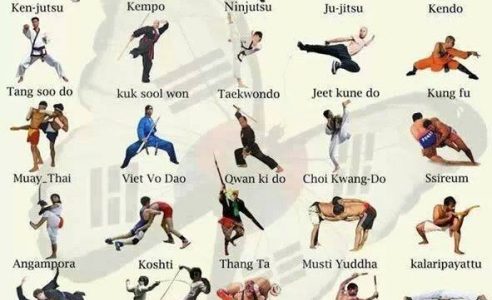The History And Advancement Of Martial Arts: From Its Ancient Origins To The Techniques Practiced Today
The History And Advancement Of Martial Arts: From Its Ancient Origins To The Techniques Practiced Today
Blog Article
Staff Writer-Brooks Frye
Enter the world of martial arts, where ancient origins and modern techniques collide in a thrilling trip of technique and self-discovery.
As you look into the background and evolution of this exciting art form, prepare to be astounded by the social influences, technical developments, and extensive philosophy that have actually formed it over centuries.
From the combat zones of ancient people to the training grounds of today, martial arts have stood the test of time, continuously adapting and growing.
Each strike, each activity, lugs with it the weight of countless years of custom and knowledge, passed down with generations. This is a story of strength, of warriors that sought not only physical expertise, yet also self-confidence and consistency.
Join us on this impressive expedition as we discover the keys, the tales, and the transformational power of martial arts.
Prepare to be inspired, challenged, and permanently changed by the history and evolution of martial arts.
Cultural Impacts on Martial Arts
As you explore the background and advancement of martial arts, you'll rapidly uncover the fascinating methods which cultural impacts have shaped these combat strategies.
From the old human beings of China and India to the much more recent advancements in Japan and Brazil, martial arts have been heavily affected by the cultures in which they originated.
For instance, Chinese martial arts, such as Martial Art and Tai Chi, are deeply rooted in the philosophy of Taoism and the idea of Yin and Yang.
In contrast, Japanese martial arts, like Martial arts and Judo, reflect the samurai warrior practices and the worths of self-control and honor.
In a similar way, Brazilian fighting style, Capoeira, combines elements of African dancing and music, showing the cultural heritage of African slaves in Brazil.
These cultural affects not only provide each fighting style its one-of-a-kind attributes but also supply a deeper understanding of the historic and social contexts in which they advanced.
Technical Innovations and Martial Arts
With the surge of advanced weaponry and innovative training devices, you've been able to improve your abilities and adjust to the ever-changing combat landscape.
Technological developments have actually transformed the method martial arts are practiced and taught. Related Site permit you to train in realistic combat circumstances without the danger of physical injury. High-speed video cameras catch every action, enabling you to analyze and excellent your methods. Wearable devices monitor your heart price, breathing, and muscular tissue activation, supplying instant feedback on your performance.
Additionally, https://famouscriminallawcases01009.luwebs.com/30854607/discover-the-advantages-of-picking-a-regional-criminal-defense-attorney-gain-access-to-expert-insights-and-customized-care-for-your-legal-matters of specialized tools, such as resistance bands and agility ladders, has actually enabled you to improve your speed, strength, and agility. These technical developments have not just made training more efficient yet have actually also pressed the boundaries of what is possible in martial arts, allowing you to get to brand-new elevations in your technique.
The Philosophy and Principles of Martial Arts
The philosophy and principles of martial arts are deeply rooted in shaping your frame of mind and instilling self-control, emphasis, and respect in your method.
1. State of mind: Martial Arts teaches you to create a strong and durable state of mind. It enables you to conquer difficulties both on and off the floor covering, pushing your limits and being determined in the face of difficulty.
2. Technique: Martial Arts demands technique and self-discipline. With routine training and adherence to rigorous regulations and techniques, you discover to control your impulses and create a solid work values.
3. Focus: Martial Arts calls for extreme focus and focus. By educating your mind to be existing in the moment, you boost your capacity to respond promptly and efficiently during combat scenarios.
4. Regard: Martial Arts highlights respect for oneself, trainers, training partners, and challengers. It educates you to value the abilities and experiences of others, promoting a feeling of sociability and sportsmanship.
Final thought
Congratulations on completing your trip via the fascinating globe of martial arts! Throughout this expedition, you have witnessed the rich history and remarkable development of these battle practices.
From their ancient origins to the contemporary methods we see today, martial arts have been shaped by social influences.
The assimilation of modern technology has actually additionally played a significant duty in reinventing the way martial arts are taught and practiced in the here and now day.
However, it is essential to remember that martial arts are greater than simply physical battle. They incorporate extensive viewpoints and assisting principles that go beyond the mere act of fighting.
Take a minute to reflect on this anachronistic journey and value just how the heritage of martial arts continues to thrive in the present, transcending time and boundaries.
